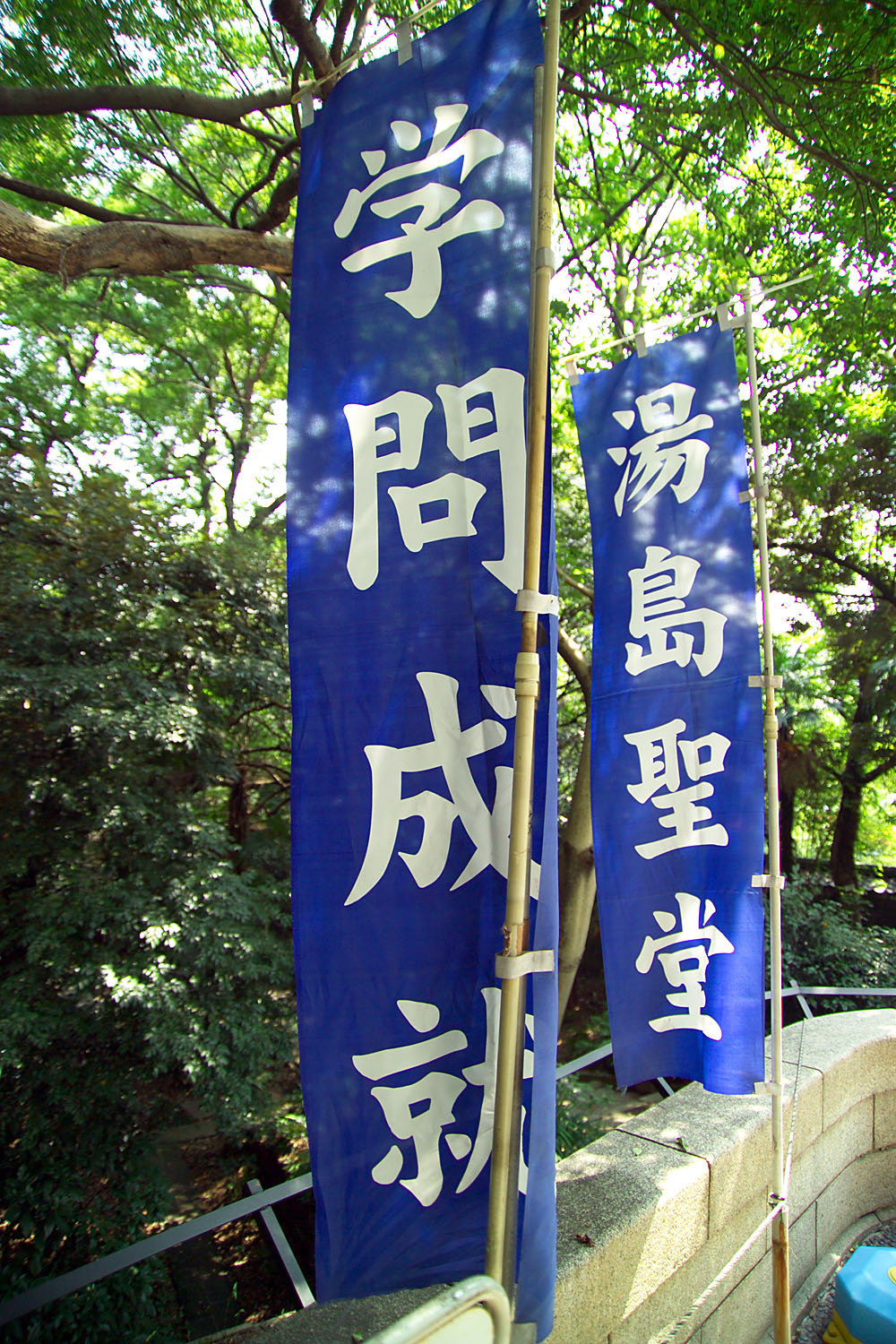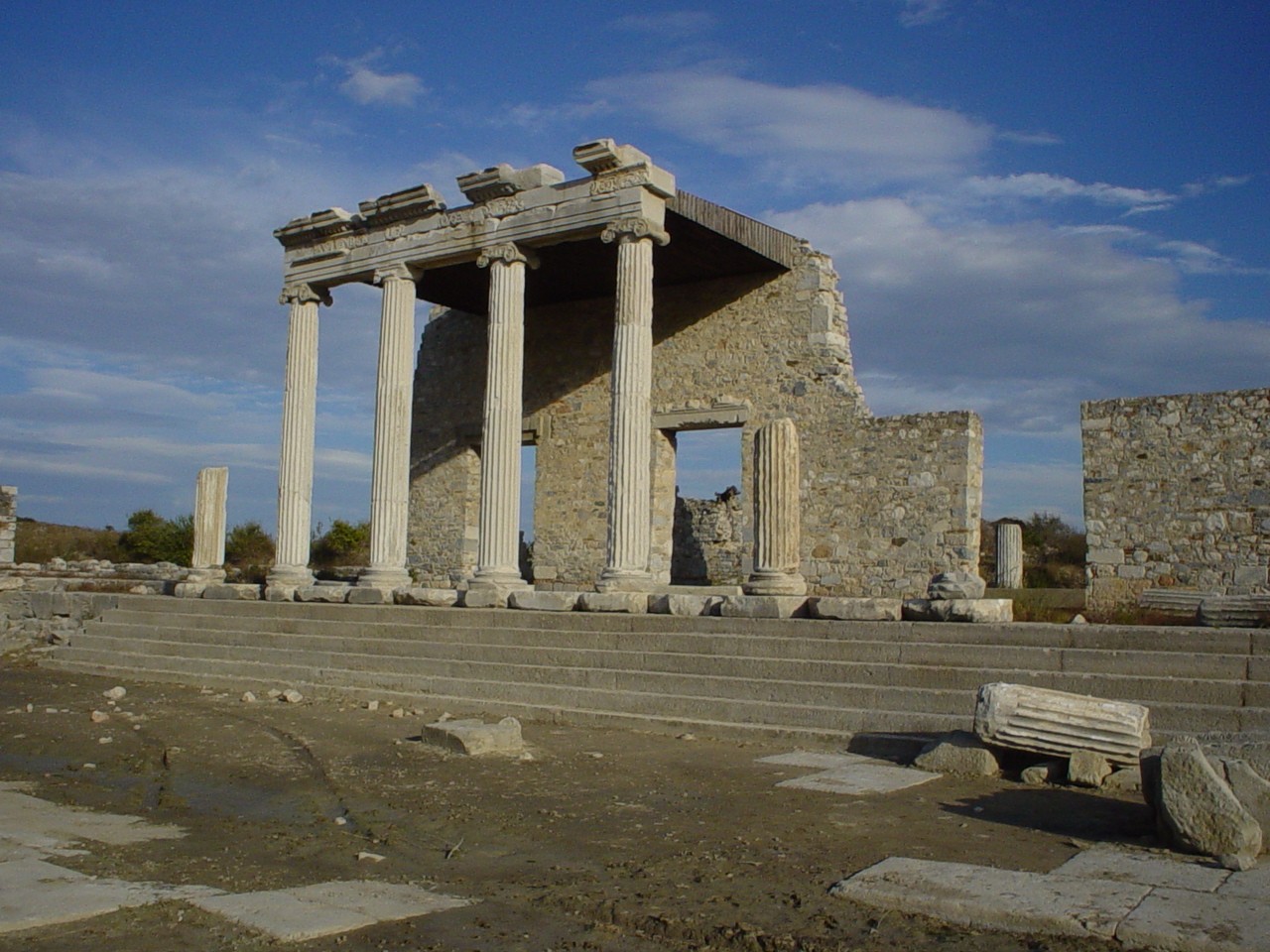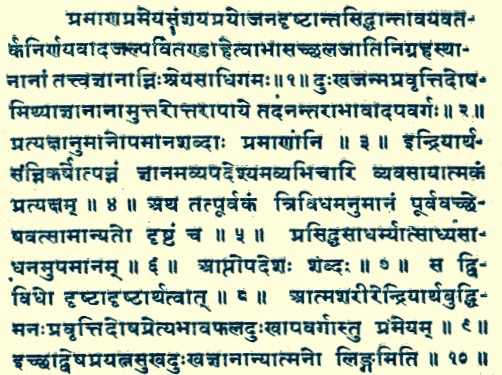|
Tetsugaku-dō Park
("Park of the Philosophy Shrine" or "Temple Garden of Philosophy") is a public park in Tokyo, Japan. Most of the park is in Nakano Ward, while approximately 7% (at the south-eastern edge) is in Shinjuku Ward. It was created successively during the years 1904 to 1919 by the philosopher and founder of Toyo University, Inoue Enryō. Inoue thought of this philosophical theme park as a place for mental cultivation. In 2020, the park was designated a National Site of Scenic Beauty. Outline The main characteristics of the park are 77 garden features named according to philosophical concepts and the commemoration of various sages and philosophers of the Eastern and the Western philosophical traditions. Philosophers and Sages # The Four Sages of World Philosophy: Buddha, Confucius, Socrates, Kant # The Six Wise Men of the East: Shōtoku Taishi, Sugawara no Michizane, Zhuāngzǐ, Zhū Xī, Nāgārjuna, Kapila # The Three Founders of Philosophy: The Yellow Emperor, Akṣapāda, Th ... [...More Info...] [...Related Items...] OR: [Wikipedia] [Google] [Baidu] |
Nakano, Tokyo
Nakano (, Latn, ja, Nakano-ku) is a Special wards of Tokyo, special ward in the Tokyo, Tokyo Metropolis in Japan. The English translation of its Japanese self-designation is Nakano City (, Latn, ja, Nakano-ku).About Nakano City " Retrieved March 10, 2013. , the ward has an estimated population of 337,377, and a population density of 21,640 persons per km2. The total area is 15.59 km2. Nakano is the most densely populated city in Japan. History The ward was founded on October 1, 1932, when the towns of Nogata and Nakano were absorbed into the former Tokyo City as Nakano Ward. The present administration dates from March 15, 1947, when the Allied occupation reformed the administration of Tokyo-to. * 1447: Ōta Dōkan defeated ...[...More Info...] [...Related Items...] OR: [Wikipedia] [Google] [Baidu] |
Zhuang Zhou
Zhuang Zhou (), commonly known as Zhuangzi (; ; literally "Master Zhuang"; also rendered in the Wade–Giles romanization as Chuang Tzu), was an influential Chinese philosopher who lived around the 4th century BCE during the Warring States period, a period of great development in Chinese philosophy, the Hundred Schools of Thought. He is credited with writing—in part or in whole—a work known by his name, the '' Zhuangzi'', which is one of two foundational texts of Taoism, alongside the ''Tao Te Ching''. Life The only account of the life of Zhuangzi is a brief sketch in chapter 63 of Sima Qian's ''Records of the Grand Historian'', and most of the information it contains seems to have simply been drawn from anecdotes in the ''Zhuangzi'' itself. In Sima's biography, he is described as a minor official from the town of Meng (in modern Anhui) in the state of Song, living in the time of King Hui of Liang and King Xuan of Qi (late fourth century BC). Sima Qian writes that ... [...More Info...] [...Related Items...] OR: [Wikipedia] [Google] [Baidu] |
Parks And Gardens In Tokyo
Tokyo, Japan contains many parks and gardens. Urban parks and gardens Note: Figures in bold are approximate values. A green row designates a Special wards of Tokyo, special ward of Tokyo. Gallery File:Akabane Nature Observatory Park1.JPG, Akabane Nature Observatory Park File:Akatsuka castle.jpg, Akatsuka Park File:JindaijiBotanicalGardens5620.jpg, Jindaiji Botanical Gardens File:East entrance to Mejiro-no-Mori 2016 11 30.jpg, Mejiro-no-Mori Park File:ShakujiiPark-Lotuses.jpg, Shakujii Park File:Shinjuku Gyoen Japanese Garden.jpg, Japanese Garden in Shinjuku Gyoen File:UenoPark Hanami.jpg, Sakura, Cherry blossoms in Ueno Park Flowers National parks There are four national parks in Tokyo: * Chichibu Tama Kai National Park, in Nishitama and spilling over into Yamanashi Prefecture, Yamanashi and Saitama Prefecture, Saitama Prefectures * Meiji no Mori Takao Quasi-National Park, around Mount Takao to the south of Hachioji. * Fuji-Hakone-Izu National Park, which includes all of th ... [...More Info...] [...Related Items...] OR: [Wikipedia] [Google] [Baidu] |
Gyōnen
Gyōnen (凝然; 1240–1321) was a Japanese Buddhist monk of the Kegon school who resided at Tōdai-ji Temple in the late Kamakura period. He studied the history of Buddhism in India, China, and Japan, compiling documents on this subject in pursuit of a comprehensive understanding of Japanese Buddhism. Biography Gyōnen, also known as Jikan, was born in Iyokuni (present-day Ehime Prefecture). He received the Bodhisattva Precepts The Bodhisattva Precepts ( Skt. ''bodhisattva-śīla'' or ''bodhisattva-saṃvāra'', , ; Tibetan: byang chub sems dpa’i sdom pa) are a set of ethical trainings ('' śīla'') used in Mahāyāna Buddhism to advance a practitioner along the path ... at Mt. Hiei in 1255. At the age of 18, he received the novice precepts and was fully ordained by Enshō (1220–1277) at Tōdaiji Temple when he was 20. He studied the teachings of a number of traditions of Buddhism including Sanron and Hossō under various masters around Japan before setting into Tō ... [...More Info...] [...Related Items...] OR: [Wikipedia] [Google] [Baidu] |
Hayashi Razan
, also known as Hayashi Dōshun, was a Japanese historian, philosopher, political consultant, and writer, serving as a tutor and an advisor to the first four ''shōguns'' of the Tokugawa ''bakufu''. He is also attributed with first listing the Three Views of Japan. Razan was the founder of the Hayashi clan of Confucian scholars. Razan was an influential scholar, teacher and administrator. Together with his sons and grandsons, he is credited with establishing the official neo-Confucian doctrine of the Tokugawa shogunate. Razan's emphasis on the values inherent in a static conservative perspective provided the intellectual underpinnings for the Edo bakufu. Razan also reinterpreted Shinto, and thus created a foundation for the eventual development of Confucianised Shinto in the 20th century. The intellectual foundation of Razan's life's work was based on early studies with Fujiwara Seika (1561–1619), the first Japanese scholar who is known for a close study of Confucius an ... [...More Info...] [...Related Items...] OR: [Wikipedia] [Google] [Baidu] |
Hirata Atsutane
was a Japanese scholar, conventionally ranked as one of the Four Great Men of Kokugaku (nativist) studies, and one of the most significant 19th century theologians of the Shintō religion. His literary name was , and his primary assumed name was . He also used the names , , and . His personal name was . Biography Early life Hirata was born as the fourth son of , an ''Obangashira'' (low-ranking) ''samurai'' of Kubota Domain, in what is now part of the city of Akita in northern Japan. Little is known of his early childhood, but it appears he was impoverished and faced hostility from his step-mother. He left home in 1795, renouncing his ties to his family and to the Domain and traveled to Edo and worked as a laborer and as a servant, while pushing opportunities to study '' rangaku'', geography, and astronomy. In 1800, at the age of 25, he caught the attention of Hirata Tōbē (平田藤兵衛), a scholar and instructor in the Yamaga school of military strategy, formerly of ... [...More Info...] [...Related Items...] OR: [Wikipedia] [Google] [Baidu] |
Thales
Thales of Miletus ( ; ; ) was an Ancient Greek philosophy, Ancient Greek Pre-Socratic philosophy, pre-Socratic Philosophy, philosopher from Miletus in Ionia, Asia Minor. Thales was one of the Seven Sages of Greece, Seven Sages, founding figures of Ancient Greece. Beginning in eighteenth-century historiography, many came to regard him as the first philosopher in the Greek philosophy, Greek tradition, breaking from the prior use of mythology to explain the world and instead using natural philosophy. He is thus otherwise referred to as the first to have engaged in mathematics, History of science#Pre-socratics, science, and deductive reasoning. Thales's view that all of nature is based on the existence of a Arche, single ultimate substance, which he Theory, theorized to be Water (classical element), water, was widely influential among the philosophers of his time. Thales thought the Earth floated on water. In mathematics, Thales is the namesake of Thales's theorem, and the interc ... [...More Info...] [...Related Items...] OR: [Wikipedia] [Google] [Baidu] |
Nyāya Sūtras
The ''Nyāya Sūtras'' is an ancient Indian Sanskrit text composed by , and the foundational text of the Nyaya school of Hindu philosophy. The date when the text was composed, and the biography of its author is unknown, but variously estimated between 6th-century BCE and 2nd-century CE.Jeaneane Fowler (2002), Perspectives of Reality: An Introduction to the Philosophy of Hinduism, Sussex Academic Press, , page 129 The text may have been composed by more than one author, over a period of time. The text consists of five books, with two chapters in each book, with a cumulative total of 528 aphoristic sutras, about rules of reason, logic, epistemology and metaphysics.Jeaneane Fowler (2002), Perspectives of Reality: An Introduction to the Philosophy of Hinduism, Sussex Academic Press, , pages 127–136 The Nyāya Sūtras is a Hindu text, notable for focusing on knowledge and logic, and making no mention of Vedic rituals. The first book is structured as a general introduction and ... [...More Info...] [...Related Items...] OR: [Wikipedia] [Google] [Baidu] |
The Yellow Emperor
The Yellow Emperor, also known as the Yellow Thearch, or Huangdi ( zh, t=黃帝, s=黄帝, first=t) in Chinese, is a mythical Chinese sovereign and culture hero included among the legendary Three Sovereigns and Five Emperors. He is revered as a deity individually or as part of the Wufang Shangdi, Five Regions Highest Deities () in Chinese folk religion. Regarded as the initiator of Chinese culture, he is traditionally credited with numerous innovations – including the traditional Chinese calendar, Taoism, wooden houses, boats, carts, the compass needle, "the earliest forms of writing", and cuju, ''cuju'', a ball game. Calculated by Jesuits in China, Jesuit missionaries, as based on various Chinese chronicles, Huangdi's traditional reign dates begin in either 2698 or 2697 BC, spanning one hundred years exactly, later accepted by the twentieth-century promoters of a universal calendar starting with the Yellow Emperor. Huangdi's cult is first attested in the Warring States peri ... [...More Info...] [...Related Items...] OR: [Wikipedia] [Google] [Baidu] |
Kapila
Kapila () (7th-6th-century BCE), also referred to as Cakradhanus, is a Vedic sage in Hindu tradition, regarded the founder of the Samkhya school of Hindu philosophy., Quote:"Kapila (fl. 550 BC), Vedic sage and founder of the system of Samkhya, one of the six schools of Vedic philosophy." His influence on Buddha and Buddhism has long been the subject of scholarly studies. There have been accusations by orthodox Buddhists that Sarvastivadins are heavily influenced by Samkhya school of philosophy. According to the Brahmanda Purana, Kapila is described as an incarnation of Vishnu: "Bhagavān Nārāyaṇa will protect us all. The Lord of the universe has now been born in the world as Kapilācārya." Many historic personalities in Hinduism and Jainism, mythical figures, pilgrimage sites in Indian religion, as well as an ancient variety of cow, are named after Kapila, or share his name. Biography The name Kapila appears in many texts, and it is likely that these names refer to ... [...More Info...] [...Related Items...] OR: [Wikipedia] [Google] [Baidu] |
Nagarjuna
Nāgārjuna (Sanskrit: नागार्जुन, ''Nāgārjuna''; ) was an Indian monk and Mahayana, Mahāyāna Buddhist Philosophy, philosopher of the Madhyamaka (Centrism, Middle Way) school. He is widely considered one of the most important Buddhist philosophers.Garfield, Jay L. (1995), ''The Fundamental Wisdom of the Middle Way'', Oxford: Oxford University Press. Nāgārjuna is widely considered to be the founder of the Madhyamaka school of Buddhist philosophy and a defender of the Mahāyāna movement. His ''Mūlamadhyamakakārikā'' (''Root Verses on Madhyamaka'', MMK) is the most important text on the Madhyamaka philosophy of Śūnyatā, emptiness. The MMK inspired a large number of commentaries in Sanskrit, Chinese, Tibetan, Korean and Japanese and continues to be studied today. History Background India in the first and second centuries CE was politically divided into various states, including the Kushan Empire and the Satavahana dynasty, Satavahana Kingdom. At ... [...More Info...] [...Related Items...] OR: [Wikipedia] [Google] [Baidu] |
Zhu Xi
Zhu Xi ( zh, c=朱熹; ; October 18, 1130April 23, 1200), formerly romanized Chu Hsi, was a Chinese philosopher, historian, politician, poet, and calligrapher of the Southern Song dynasty. As a leading figure in the development of Neo-Confucianism, Zhu Xi played a pivotal role in shaping the intellectual foundations of later imperial China. He placed great emphasis on rationality, opposed mysticism and religious experience, and constructed a huge philosophical system. His extensive commentaries and editorial work on the ''Four Books'' became the core texts of the imperial civil service examinations from 1313 until their abolition in 1905. He advanced a rigorous philosophical methodology known as the "investigation of things" () and emphasized meditation as an essential practice for moral and intellectual self-cultivation. Zhu Xi's thought exerted profound influence, becoming the official state ideology of China from the Yuan dynasty onward, and was later adopted in other East ... [...More Info...] [...Related Items...] OR: [Wikipedia] [Google] [Baidu] |







